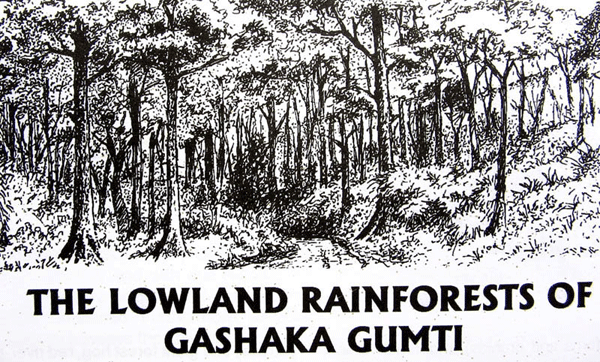
What is a Rainforest?
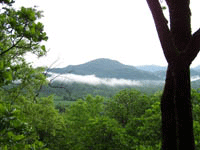
Forest vegetation is dominated by woody species, the majority of which are tall trees. These trees cast a deep and unceasing shade over the ground, too dark to support the growth of grasses. Tropical rainforests are a special type of forest which are only found in those regions blessed with a sufficiently high rainfall, generally accepted to be above 1,200 millimetres per year (the lowest degree of dryness reached by the atmosphere and the length of the dry season are equally critical).
Many people are surprised to learn that Gashaka-Gumti National Park, which is located in the far North of the country, is still able to sustain significant areas of rainforest, a habitat more usually associated with Southern Nigeria. What happens at Gashaka-Gumti is that high mountain ranges in the area act to trap rain-clouds blowing in off the Atlantic Ocean, thus ensuring abundant rainfall, easily sufficient to support large patches of rainforest throughout the Southern park sector. Lowland rainforests are also able to thrive along the park's many river valleys, where they are more correctly known as gallery forests.
Why Are Rainforests Important?
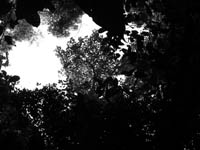
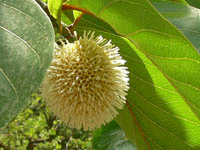
Rainforests, also called tropical moist forests, are the most species-rich ecological community on earth. It has been estimated that tropical forests contain more than half of all the world's species of plants and animals on some 6 % of it's surface area. At the same time it is also the most endangered of the world's major biomes. Rainforests have been destroyed or degraded at a very high rate during the last three decades, and less than half of the original area remains unaffected worldwide. Unless we protect what we have left now a significant proportion of the world's biodiversity will be lost forever.
Moreover, these forests are thought to contribute strongly to global climate patterns, and their loss is widely suspected to be involved in the present phenomenon of global warming. Serious local consequences of forest clearance are also becoming commonplace, including droughts, floods and extreme weather conditions induced by damage to the biophysical capabilities of forest land. Furthermore it is known that some plants and trees found only in rainforests are likely to contain genetic material of significant commercial and medicinal value.
It is an undeniable fact that forests are essential for sustaining human life.
How Much Rainforest Remains?
The vast majority of Nigeria's rainforest areas have already been destroyed for logging, agriculture, and for plantations. Today, few rainforests remain in their natural, undisturbed condition although National Parks are one place where they have managed to survive. The rainforests of Gashaka-Gumti National Park have been preserved for the benefit of future generations, and as a natural phenomenon for your enjoyment and wonder.
What Does it Look Like?
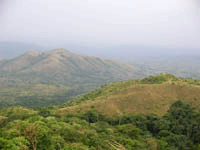
Where rainforest has been left undisturbed for a long period of time, a complex layered structure comprising 3 distinct tree strata can be discerned.
The tallest level, consisting of the emergent trees of the rainforest which can attain a height of over 40 metres, includes many valuable timber trees such as Terminalia superba (afara), Khaya grandifoliola (savannah mahogany), as well as the silk-cotton tree ( Ceiba pentandra ). The crowns of these emergents tower above the general forest canopy whose bases often develop strong buttresses. The middle level, with heights between 15 and 35 metres, forms a more or less closed forest canopy underneath. A third stratum, or understorey, comprises small trees with heights of 2-8 metres.
All the tree strata carry an array of epiphytes (ferns and orchids) and lianas that, with the trees, present an extremely complex plant community capable of supporting large numbers of birds and insects.
Mammals of the Rainforest
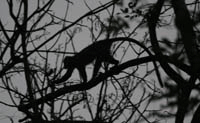
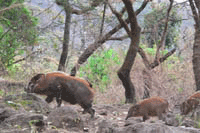
There are more species of mammal found in the park's rainforests than in any other of its vegetation zones. Fortunately some of the best forests are situated only a short walking distance from Gashaka village, conveniently located on the western edge of the National Park. It is in these thick, dark rainforests of the Southern park sector that visitors may glimpse some of Nigeria's rarest and most unusual animals. Although primates are the most conspicuous group, it is the bats and small rodents, which are the most successful mammals of the rainforest. Due to the low light intensity at ground level, grasses are virtually absent from the forest. It is not surprising to find, therefore, that the large grass-eating antelopes so characteristic of savannah areas are absent from the forest. Their place is instead taken by smaller, forest-adapted antelopes known as duikers. Duikers survive in the rainforest by foraging for fallen fruit and browsing on leaves and twigs.
In general, forest animals tend to be rather shy and solitary, and the thick dark foliage of the rainforest hampers visibility. Under such conditions your senses of smell and hearing assume a far greater importance. Always walk slowly and as quietly as possible, pausing frequently just to listen. Stay close behind your guide and, if you are lucky and patient, you may see Giant forest hog, Red river hog, Yellow-backed duiker, Red-flanked duiker, bushbuck, or even the mighty Forest buffalo, in addition to the ever present primates.
